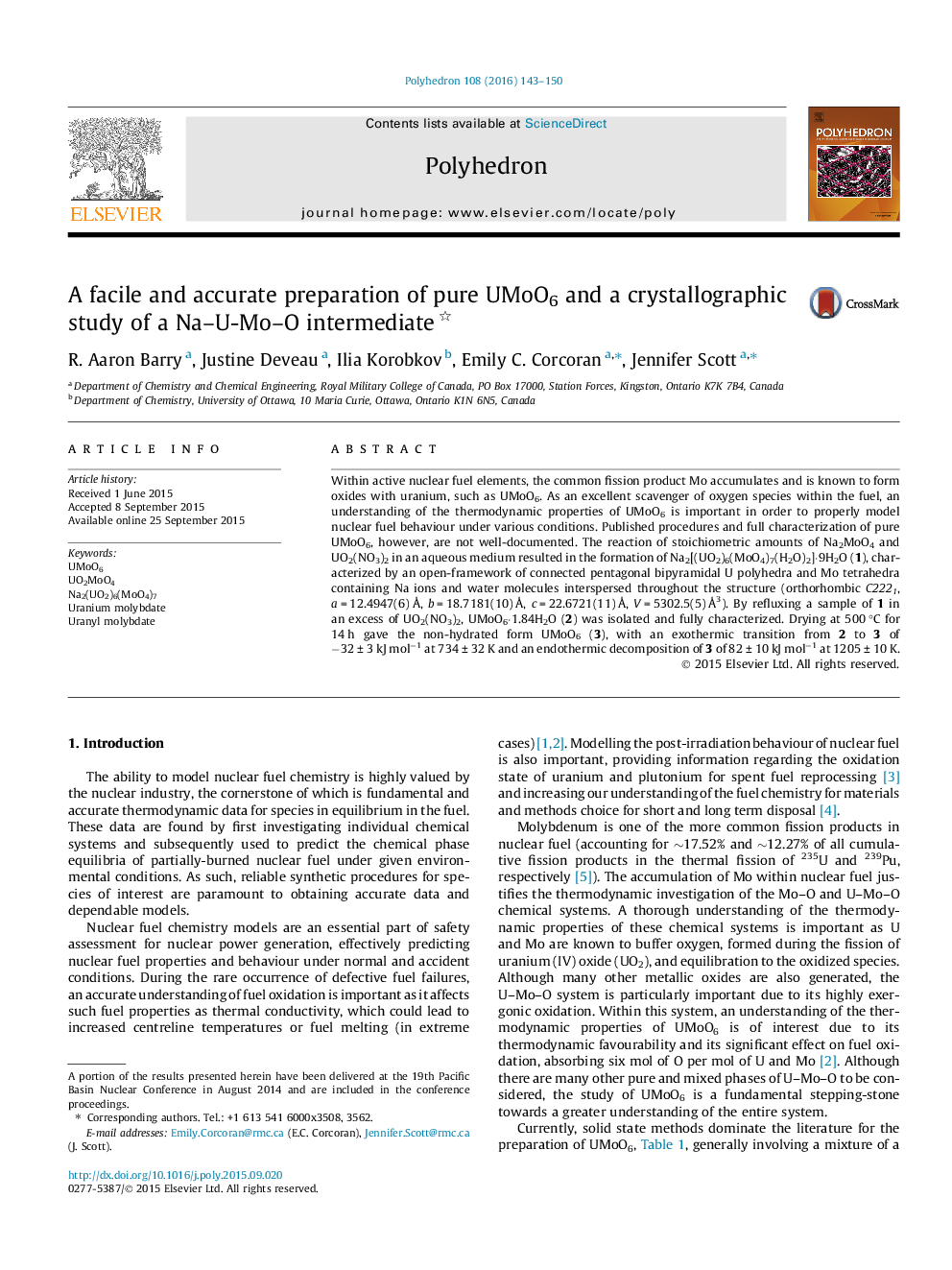| Article ID | Journal | Published Year | Pages | File Type |
|---|---|---|---|---|
| 1336553 | Polyhedron | 2016 | 8 Pages |
Within active nuclear fuel elements, the common fission product Mo accumulates and is known to form oxides with uranium, such as UMoO6. As an excellent scavenger of oxygen species within the fuel, an understanding of the thermodynamic properties of UMoO6 is important in order to properly model nuclear fuel behaviour under various conditions. Published procedures and full characterization of pure UMoO6, however, are not well-documented. The reaction of stoichiometric amounts of Na2MoO4 and UO2(NO3)2 in an aqueous medium resulted in the formation of Na2[(UO2)6(MoO4)7(H2O)2]·9H2O (1), characterized by an open-framework of connected pentagonal bipyramidal U polyhedra and Mo tetrahedra containing Na ions and water molecules interspersed throughout the structure (orthorhombic C2221, a = 12.4947(6) Å, b = 18.7181(10) Å, c = 22.6721(11) Å, V = 5302.5(5) Å3). By refluxing a sample of 1 in an excess of UO2(NO3)2, UMoO6·1.84H2O (2) was isolated and fully characterized. Drying at 500 °C for 14 h gave the non-hydrated form UMoO6 (3), with an exothermic transition from 2 to 3 of −32 ± 3 kJ mol−1 at 734 ± 32 K and an endothermic decomposition of 3 of 82 ± 10 kJ mol−1 at 1205 ± 10 K.
Graphical abstractThe reaction of stoichiometric amounts of Na2MoO4 and UO2(NO3)2 in an aqueous medium resulted in the formation of Na2[(UO2)6(MoO4)7(H2O)2]·9H2O (1). By refluxing a sample of 1 in an excess of UO2(NO3)2, an intermediate meta-stable UMoO6 eventually resulted in pure UMoO6, of interest in nuclear fuel modelling. Thermodynamic studies indicate a decomposition temperature of 1205 K.Figure optionsDownload full-size imageDownload as PowerPoint slide
